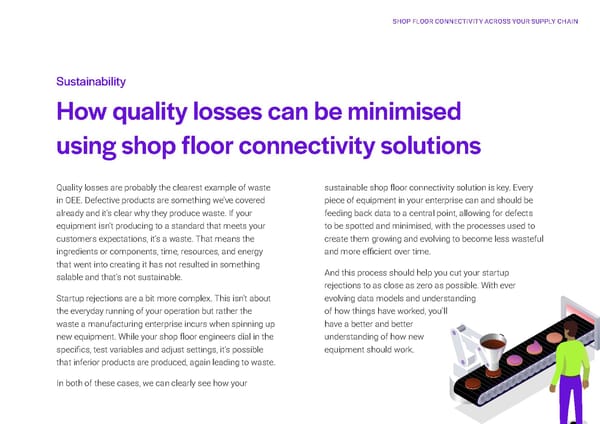Quality losses are probably the clearest example of waste in OEE. Defective products are something we’ve covered already and it’s clear why they produce waste. If your equipment isn’t producing to a standard that meets your customers expectations, it’s a waste. That means the ingredients or components, time, resources, and energy that went into creating it has not resulted in something salable and that’s not sustainable. Startup rejections are a bit more complex. This isn’t about the everyday running of your operation but rather the waste a manufacturing enterprise incurs when spinning up new equipment. While your shop floor engineers dial in the specifics, test variables and adjust settings, it’s possible that inferior products are produced, again leading to waste. In both of these cases, we can clearly see how your sustainable shop floor connectivity solution is key. Every piece of equipment in your enterprise can and should be feeding back data to a central point, allowing for defects to be spotted and minimised, with the processes used to create them growing and evolving to become less wasteful and more efficient over time. And this process should help you cut your startup rejections to as close as zero as possible. With ever evolving data models and understanding of how things have worked, you’ll have a better and better understanding of how new equipment should work. Sustainability How quality losses can be minimised using shop floor connectivity solutions SHOP FLOOR CONNECTIVITY ACROSS YOUR SUPPLY CHAIN
 Shop floor connectivity across your supply chain - How to roll out your global empire with ease Page 31 Page 33
Shop floor connectivity across your supply chain - How to roll out your global empire with ease Page 31 Page 33